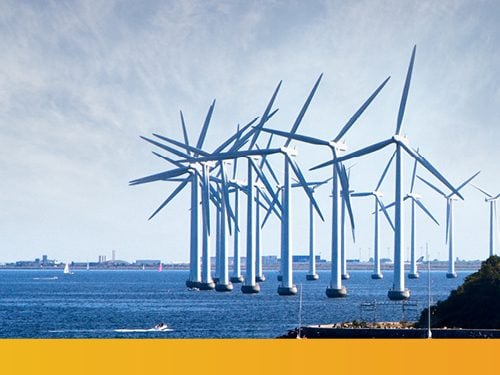

The United States has seen a cumbersome rise in the cost of power purchase agreements (PPAs) during recent years. Prices have gone up by 9.7% in the first quarter of 2022 and have represented a 28.5% increase year on year. Supply chain issues such as supply and demand volatility in the market and regulatory issues caused by independent service operators have caused this massive price increase.
PPAs are long-term agreements that project developers and consumers, usually a corporate business, enter. This agreement stipulates that the consumer will buy renewable energy from the project developer from a range of projects including wind, solar, hydropower or geothermal.
Major industrial and multinational companies have entered into such agreements; from Big Tech's Google and Meta, to the large energy users of steel giants Nucor and Gerdau, and the cement majors Cemex and Lafarge Canada.
PPAs began to gain momentum in the United States after the energy industry became deregulated with the help of The Energy Policy Act of 2005 and since 2018, PPAs have been dominating the way businesses make arrangements to receive their energy.
There have been a number of noteworthy deals in the U.S in the first quarter of the year. Telecommunication companies Verizon, AT&T and Comcast have signed agreements to ensure their supply of energy is at least partially renewable. Verizon in particular has taken their commitment a step further, having signed seven virtual PPAs. With AT&T signing two virtual PPAs and Comcast one deal for 250 MW of solar.
Large scale energy users including U.S aluminium producer Alcoa has also signed a PPA with Capital Energy to gain 573 MW of wind in Spain. This is not only an attempt to make their operations green but given that the energy prices in Europe have skyrocketed, 60% of their current total costs are spent on energy in their Spanish operations so integrating more renewables is a cost cutting exercise too.
Even with a plethora of notable PPAs being signed, in recent years there have been difficulties relating to supply chain and regulatory issues.
Firstly, supply chain issues have been brought on by supply and demand volatility caused by the decrease in production and demand of components because of the Covid-19 pandemic.
Recently there has been a surge in the demand for materials used in renewable energy projects. An example of this is with “key solar panel components” in particular polysilicon which is what is mainly used to make solar cells.
There was an oversupply of these key components used in solar panels before the pandemic and once Covid-19 hit, production decreased. Then as economic activity resumed and there was an influx in demand for products, manufacturers were no long equipped to handle such a market. This made the waiting time for polysilicon longer and the component more expensive.
Another issue affecting the supply chain is shortage of labour.
People have been retrenched due to a slowdown in economic activity, there has been a lot of resignations, an unprecedented amount of resignations – this time has been called “the great resignation.” This has been happening with warehouse workers as well as truck drivers. Without these key people it makes the logistics of getting components from supplier to customer hard and causes delays.
There’s also a number of regulatory issues that are causing uncertainty among developers.
The Electric Reliability Council of Texas which is the independent service operator that regulates the electricity market in Texas has always had high settlement values and made Texas a favourable region among energy buyers. Yet, because of the changes in regulation that limit the price developers can earn, there is now uncertainty around the economics of projects and the profit they can make.
Another regulatory issue faced by developers is with the PJM, which is a regional transmission organisation that oversees wholesale electricity in thirteen states in the Northeast of the United States.
There has been a backlog with regulators working through interconnection applications of new sources of clean energy that are waiting to be assessed and added to the grid. Due to this backlog there has been an increase in the price of PPA’s in the region.
These regulatory and supply chain issues have resulted in an increase in PPA prices and rising project development costs and uncertainty on whether sufficient returns will be able to be made on a project.
Whilst these issues have negatively impacted the developers’ market for power purchase agreements, this has not led to a decrease in demand for clean energy.
Corporations using large amounts of energy for their operations are still committed to reaching their renewable energy targets. With legislations like The Build Back Better being passed and the Inflation Reduction Act, domestic supply chains would be able to operate better. Build Back Better will put targets in place to incentivise domestic supply chains that are there to ensure the energy transition and the Inflation Reduction Act will ensure $60 billion is invested to create manufacturing jobs in the clean energy sector.